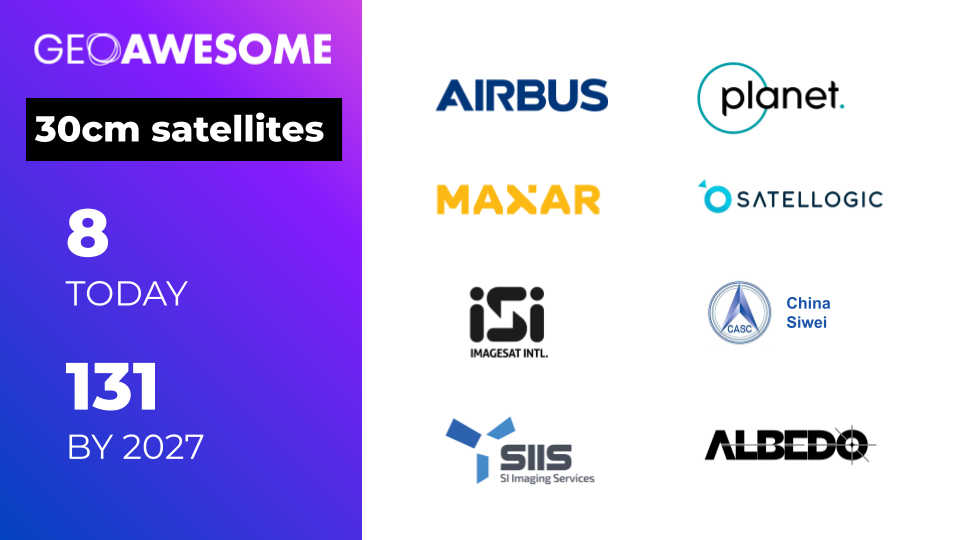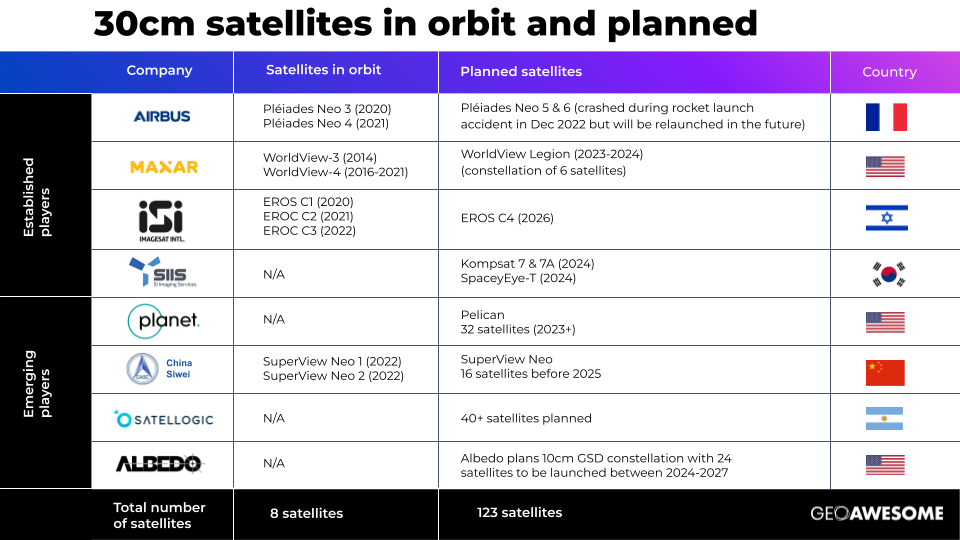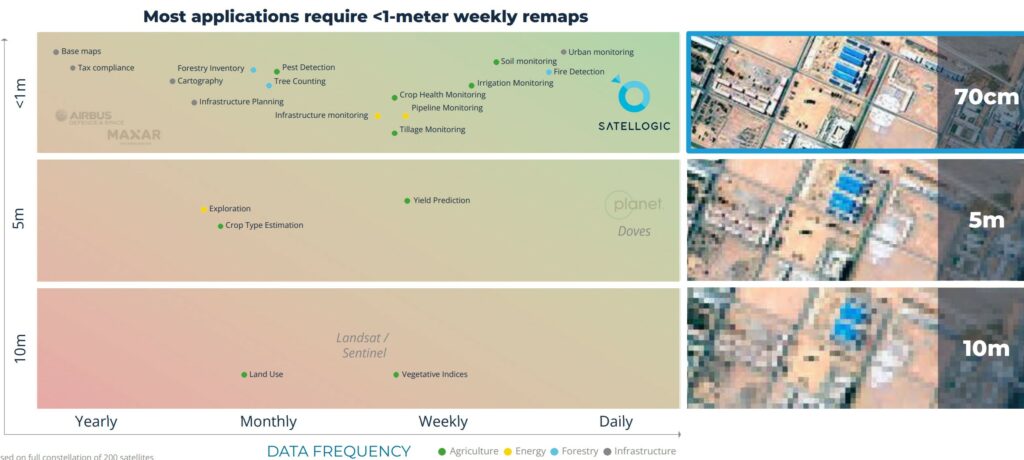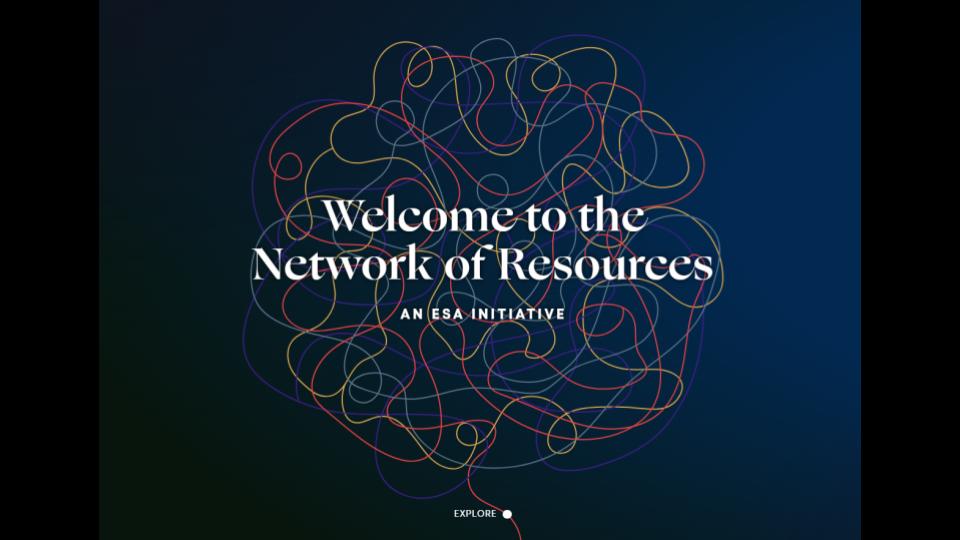
Apply for the ESA NoR Sponsorship and Receive up to €5,000 to spend on Earth Observation Services and Data
Earth observation (EO) efforts have come along in leaps and bounds in recent years and as the technology advances, so do the potential applications. By making data collection, processing, and analysis more accessible, the barriers to entry lower and geospatial enthusiasts can tackle problems across every industry with high-quality, reliable data.
One barrier that still remains is the cost of obtaining this data. And that’s why the European Space Agency’s (ESA) Network of Resources initiative (NoR) is so exciting. NoR provideS users with a unique environment to discover EO services and their associated costs that may be useful in achieving specific project goals. ESA then provides sponsorship for these resources for selected users who want to try the various services, up to a maximum of €5,000 per user.
The network currently has over 940 service offerings available through the portal. It’s a fantastic selection of resources that can be leveraged to support non-commercial projects of all shapes and sizes.
How Do You Apply for the ESA Sponsorship?
The ESA sponsorships for NoR are meant for use in research, pre-commercial development, and demonstration projects that exploit satellite-based EO data. You can apply if you’re working on a geospatial-related project that doesn’t generate revenue and only requires downloading of the processed results (not the original data).
All you need to do is explain what your project is trying to accomplish, lay out the reason why these EO services can be of assistance, and then commit to sharing a final report about your project after it has been completed.
The process to apply for a sponsorship (link to detailed instructions) is as follows:
- Use the NoR discovery portal to review the available portfolio of resources and identify the most suitable solution.
- Go through the pricing wizard procedure using the link visible on the main page of the portfolio corresponding to the chosen provider.
- Select “Ask ESA for sponsorship” and then “Open Sponsorship form”.
- Export the sponsorship request from the wizard page, sign it, and email it to NoR-SponsorshipRequests@esa.int.
Your proposal will then be reviewed in around 6-10 working days and the team will assess your project according to your eligibility, the merits of the project and the proposed follow-on, and the appropriateness and cost-efficiency of the requested resources.
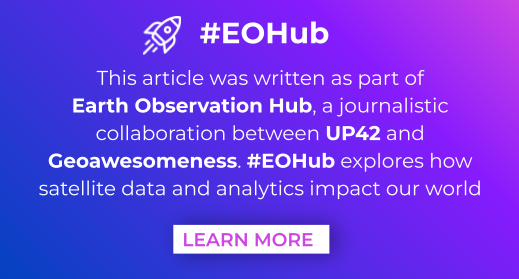
What UP42 Resources Are Available?
When you look through the discovery portal, you’ll see a wide range of different service providers covering analytics, AlgoHosting, DPaaS, IaaS, IDE, and other auxiliary services. You can use the filters on the left-hand side to adjust for service type, data source, geographical coverage, and temporal period. You can also search by keyword if you know exactly what you’re looking for. From there, you can look through the detailed summaries of each service provider and compare what they have to offer.
UP42 is a proud contributor to the network, and offers many of their services and data collections as a part of this initiative. Their platform offers companies and developers access to a range of commercial and open data sources as well as a variety of data processing algorithms for data preparation, calculation of indices and statistics, and advanced ML-based algorithms.
The data collections on offer include:
- Pleiades Neo
- GaoFen-7 Stereo
- NightVision
- TerraSAR-X & TanDEM-X & PAZ
- BlackSky
- Superview 2
- Superview 1
- HyperScan
- Capella Space
- DailyVision@75cm
- EarthScanner
- NEXTMap One 1m DSM
- Superview NEO-1
- ICEYE
- Satellogic NewSat
- GaoFen-3
- Spot 6/7
- Jilin Stereo
- WorldDEM
- JL-1GF04A
- Pleiades
- GaoFen-2
- ZY Tri-Stereo
In terms of services, UP42 makes available various Fixed VM AlgoHosting services, as well as several DPaaS services which include the following (not an exhaustive list):
- Coregistration
- DIMAP to GeoTIFF Conversion
- Flood Finder
- Host Your Own Algorithm
- K-means Clustering
- Land Cover Classifier
- NDVI
- NDVI Threshold
- NetCDF to GeoTIFF Conversion
- Pansharpening
- Raster CRS Conversion
- Raster Tiling
- Raster Zonal Statistics
- Sharpening Filter
- Super-resolution
- Time Series Image Statistics
- Vectorization
- Water Finder
- Count Objects
You can apply existing algorithms to data blocks or certain catalog collections (SPOT, Pléiades, and Pléiades Neo), or use custom blocks with your own algorithms and apply them to any data blocks or catalog collections. As you can see, the opportunities to leverage geospatial data and algorithms are endless as you seek to enrich and augment your analysis. You can use the pricing wizard to estimate costs for your specific use case and let that inform your application for sponsorship if you want to make use of what UP42 has to offer.
There is so much to be explored here, and it’s incredibly exciting to see just how many different options you have at your disposal.
What Has Been Accomplished So Far?
The ESA NoR initiative has already been a great success, with 420 projects having received sponsorship (at the time of writing). Some of the projects that have been completed so far include:
- Automatic detection of building stock changes in Germany,
- Crop performance forecasting in France,
- Decadal ice thickness and mass balance estimations of glaciers in the Himalayas,
- Detection and analysis of landslides in Argentina,
- and so many more…
It’s inspiring just to scroll through the list of projects and see how wide the pool of potential applications for this technology truly is. Some of the in-progress projects include cave system mapping in Denmark, characterization of forest degradation signals in Italy, coastal erosion analysis in Ireland, and data science education efforts in Turkey.
The breadth of potential projects is staggering and it speaks to the myriad of opportunities that such a sponsorship opens up to take earth observation and geospatial analysis to the next level.
Where To From Here?
If you have a non-commercial project that could benefit from the NoR, then now is the best time to take advantage of the opportunity. By leveraging the vouchers for EO data and other services, you can take your research from an idea to a fully-fledged completed project that uses cutting-edge technology and up-to-date data. This could just be the catalyst for your future innovation and a jumpstart to your future.
To find out more, check out the NoR website or contact the team directly at NoR@esa.int.
Did you like the article? Read more and subscribe to our monthly newsletter!
On April 26th, we launched our first sector focused newsletter. Didn’t sign up yet? Check out the edition before you do 🙂 Convinced? Sign up now!




